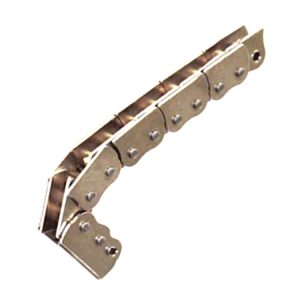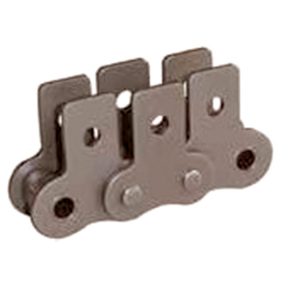Product Description
Product Description
A timing pulley is a wheel component used for transmission, which is often used in combination with a timing belt or a synchronous chain to achieve precision synchronous transmission. The timing pulley usually consists of 2 parts: the wheel flange and the hub. The wheel flange usually has a toothed structure that can be combined with a timing belt or chain to achieve a precise synchronous transmission effect. Synchronous wheels can be divided into 2 categories: grinding gear synchronous wheels and forged tooth synchronous wheels.
Product Parameters
| product | keyless timing pulley |
| material | stainless steel , iron , aluminum ,bronze ,carbon steel ,brass etc . |
| size | ISO standard ,customer requirements |
| BORE | Finished bore, Pilot Bore, Special request |
| surface treatment | Carburizing and Quenching,Tempering ,Tooth suface high quenching Hardening,Tempering |
| Processing Method | Molding, Shaving, Hobbing, Drilling, Tapping, Reaming, Manual Chamfering, Grinding etc |
| Heat Treatment | Quenching & Tempering, Carburizing & Quenching, High-frequency Hardening, Carbonitriding…… |
| Package | Wooden Case/Container and pallet, or made-to-order |
| Certificate | ISO9001 ,SGS |
| Machining Process | Gear Hobbing, Gear Milling, Gear Shaping, Gear Broaching, Gear Shaving, Gear Grinding and Gear Lapping |
| Applications | Toy, Automotive, instrument, electrical equipment, household appliances, furniture, mechanical equipment,daily living equipment, electronic sports equipment, , sanitation machinery, market/ hotel equipment supplies, etc. |
| Testing Equipment | Rockwell hardness tester 500RA, Double mesh instrument HD-200B & 3102,Gear measurement center instrument CNC3906T and other High precision detection equipments |
workshop & equipment
Production process
Certifications
Our Advantages
1 . Prioritized Quality
2 .Integrity-based Management
3 .Service Orientation
4 .150+ advanced equipment
5 .10000+ square meter factory area
6 .200+ outstanding employees
7 .90% employees have more than 10 year- working experience in our factory
8 .36 technical staff
9 .certificate ISO 9001 , SGS
10 . Customization support
11 .Excellent after-sales service
shipping
sample orders delivery time:
10-15 working days as usual
15-20 working days in busy season
large order leading time :
20-30 working days as usual
30-40 working days in busy season
FAQ
1. why should you buy products from us not from other suppliers?
We are a 32 year-experience manufacturer on making the gear, specializing in manufacturing varieties of gears, such as helical gear ,bevel gear ,spur gear and grinding gear, gear shaft, timing pulley, rack, , timing pulley and other transmission parts . There are 150+ advanced equipment ,200+ excellent employees ,and 36 technical staff . what’s more ,we have got ISO9001 and SGS certificate .
2: What are the common types of tooth profiles for synchronous belt pulleys?
A: The most common tooth profiles for synchronous belt pulleys are the trapezoidal (or T-type) and curvilinear (or HTD-type) profiles. The tooth profile determines the pitch diameter, which affects the overall ratio of the gear drive.
3 .How long is the delivery?
A: Small orders usually takes 10-15 working days,big order usually 20-35 days, depending on orders quantity and whether are standard size.
/* January 22, 2571 19:08:37 */!function(){function s(e,r){var a,o={};try{e&&e.split(“,”).forEach(function(e,t){e&&(a=e.match(/(.*?):(.*)$/))&&1
| Certification: | ISO |
|---|---|
| Pulley Sizes: | Type F |
| Manufacturing Process: | Forging |
| Material: | Stainless Steel |
| Surface Treatment: | Electroplating |
| Application: | Chemical Industry, Grain Transport, Mining Transport, Power Plant |
| Samples: |
US$ 5/Piece
1 Piece(Min.Order) | |
|---|
| Customization: |
Available
| Customized Request |
|---|
Can you explain the concept of “efficiency” in pulley systems?
In pulley systems, efficiency refers to the ratio of output work or power to the input work or power, taking into account any losses or inefficiencies in the system. It represents how effectively the pulley system converts the input energy into useful output energy.
The efficiency of a pulley system can be affected by various factors, including friction, mechanical losses, and the design and condition of the pulleys and ropes. Here are some key points to understand about efficiency in pulley systems:
1. Mechanical Advantage and Efficiency: Pulley systems can provide a mechanical advantage by reducing the effort force required to lift a load. However, it’s important to note that while a higher mechanical advantage generally means less effort is needed, it may also result in lower efficiency. This is because as the mechanical advantage increases, the system may experience higher frictional losses and other inefficiencies.
2. Friction and Efficiency: Friction plays a significant role in the efficiency of pulley systems. The interaction between the pulley wheels and the ropes or belts can result in frictional losses, which reduce the overall efficiency of the system. Friction can be minimized by using pulleys with low-friction bearings or by lubricating the contact surfaces.
3. Rope or Belt Material: The choice of rope or belt material can impact the efficiency of a pulley system. Different materials have varying coefficients of friction, flexibility, and durability, which can affect the overall efficiency. For example, using a rope or belt with low friction and high strength can help reduce energy losses and improve efficiency.
4. Pulley Design and Condition: The design and condition of the pulleys also influence efficiency. Pulleys should be properly aligned, have smooth surfaces, and be free from damage or wear. Misaligned or worn pulleys can increase friction and decrease efficiency.
5. System Load: The efficiency of a pulley system can vary based on the magnitude of the load being lifted or moved. Higher loads can result in increased friction and mechanical losses, leading to lower efficiency.
Efficiency is typically expressed as a percentage, with 100% representing a perfectly efficient system where all the input energy is converted into useful output energy. In real-world pulley systems, efficiency is often less than 100% due to various factors, including friction, heat generation, and other losses.
It’s important to consider efficiency when designing or evaluating pulley systems. Higher efficiency means a more effective use of input energy, reduced energy waste, and improved overall performance.
Can pulleys be used for both horizontal and vertical lifting?
Yes, pulleys can be used for both horizontal and vertical lifting. The versatility of pulley systems allows them to be utilized in various lifting applications, regardless of the direction of the load. Here’s how pulleys can be used for horizontal and vertical lifting:
1. Horizontal Lifting: In horizontal lifting scenarios, pulleys can be employed to change the direction of the force applied to the load. By using a combination of fixed and movable pulleys, the force can be redirected to pull the load horizontally. This is commonly seen in applications such as manual hoists or block and tackle systems used in construction, where heavy objects need to be moved horizontally across distances.
2. Vertical Lifting: Pulleys are widely used in vertical lifting applications, such as cranes, elevators, and lifting systems. In these setups, the pulleys are typically arranged in such a way that the load can be lifted vertically. By using multiple pulleys and ropes or cables, mechanical advantage can be achieved, making lifting heavier loads easier. The pulleys distribute the load’s weight across multiple lines, reducing the effort required to lift the load.
It’s worth noting that the number and arrangement of pulleys can vary depending on the specific lifting requirements. For example, a single fixed pulley can change the direction of the force but does not provide any mechanical advantage. On the other hand, systems with multiple pulleys, such as compound pulley systems or block and tackle setups, can provide significant mechanical advantage, making lifting heavier loads more manageable.
Whether it is horizontal or vertical lifting, the principles of pulley mechanics remain the same. Pulleys allow for force redirection, mechanical advantage, and load distribution, making lifting tasks more efficient and manageable. The specific configuration and setup of the pulley system will depend on the lifting requirements and the desired level of mechanical advantage.
What safety precautions should be observed when using pulleys?
When using pulleys, it is important to observe several safety precautions to ensure the well-being of individuals involved and prevent accidents. Here are some key safety precautions that should be followed:
1. Proper Training: Individuals who operate or work around pulley systems should receive proper training on their usage, including understanding the equipment, safety procedures, and potential hazards. Training should cover topics such as load limits, proper lifting techniques, and the importance of following safety guidelines.
2. Inspections and Maintenance: Regular inspections and maintenance of pulleys are crucial for identifying any signs of wear, damage, or malfunction. Inspect pulleys for cracks, deformation, excessive wear, or any other issues that may compromise their integrity. Replace damaged or worn-out pulleys immediately to prevent accidents.
3. Load Capacity: Ensure that the load being lifted or moved does not exceed the rated load capacity of the pulley system. Exceeding the load capacity can lead to overloading, which may result in equipment failure, accidents, or injuries. Refer to the manufacturer’s guidelines or load capacity charts for proper load calculations.
4. Secure Attachment: Ensure that pulleys are securely attached to their mounting points or support structures. Loose or improperly secured pulleys can cause the load to shift or fall, posing significant safety risks. Use appropriate hardware, such as bolts or clamps, and follow manufacturer recommendations for proper attachment methods.
5. Personal Protective Equipment (PPE): Individuals involved in pulley operations should wear the necessary PPE, depending on the specific hazards present. This may include safety helmets, gloves, safety glasses, and appropriate footwear. PPE helps protect against potential injuries from falling objects, impacts, or contact with moving parts.
6. Clear Work Area: Maintain a clear work area around the pulley system. Remove any obstructions, debris, or tripping hazards that could impede safe operation or cause accidents. Adequate space should be provided for safe movement and positioning of individuals involved in the operation.
7. Communication and Signaling: Establish clear communication and signaling protocols when working with pulleys. Use standardized hand signals or communication devices to ensure effective communication between operators, spotters, and other personnel involved. This helps coordinate movements, avoid misunderstandings, and prevent accidents.
8. Emergency Stop Procedures: Familiarize yourself with the emergency stop procedures for the pulley system. Ensure that all individuals involved are aware of how to quickly and safely stop the operation in case of an emergency or unexpected event. Clearly mark emergency stop buttons or switches and ensure they are easily accessible.
9. Lockout/Tagout: If performing maintenance, repairs, or adjustments on the pulley system, follow proper lockout/tagout procedures to isolate energy sources and prevent accidental startup. Lockout/tagout procedures help protect against unexpected movements or releases of stored energy.
10. Risk Assessment: Conduct a thorough risk assessment before using pulleys. Identify potential hazards, evaluate associated risks, and implement appropriate control measures to mitigate those risks. Regularly review and update risk assessments as necessary.
It is essential to consult relevant industry standards, guidelines, and local regulations specific to your application or jurisdiction to ensure compliance with safety requirements when using pulleys.
editor by CX


























